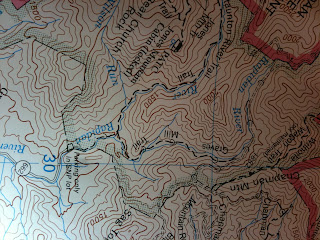For the last couple of summers, I have been taking some "me" time to learn and give back. While my kids are having fun and spending quality time with their grandparents, I rejuvenate my passion for all things hiking and environmental. In the past, I canoe camped in the Adirondacks to learn and become a
Leave No Trace Master Educator and strategized with Appalachian Trail clubs in the White Mountains to encourage youth to become trail stewards. This summer, I participated in an
American Hiking Society Volunteer Vacation on the
Iron Goat Trail in Stevens Pass, Washington (Central Cascades).

Thirteen volunteers from all parts of the United States gathered at the Mountaineers Lodge in Stevens Pass on July 9th for two purposes: to have fun and give our sweat to the Iron Goat Trail. We worked with
Volunteers for Outdoor Washington, their Iron Goat Trail committee and the
US Forest Service to fix problems caused by multiple avalanches on the nine mile trail. Originally, the group was supposed to break ground on a new connector trail. However, Martin's Creek was running high due to a late snow melt and the Forest Service couldn't build a temporary bridge to access the area (the Cascades received three feet of snow in April). Therefore each day, our large group split into many, each with a crew leader, to tackle
blowdowns, dig root balls, fix
cribbing, install and clean drainage dips, brush (otherwise known as weed whacking), clear boulders, repair bridges, fix surface gullies, and clear a lot of avalanche debris on the lower and upper pass of the Iron Goat Trail.
The
Iron Goat Trail is an interpretive rails trail built from the
Great Northern Railroad bed. The railroad was an engineering feat and so is the trail, both built with incredible sweat equity. In the early 1900's, thousands of immigrant workers blasted tunnels, dared heights to construct trellis and chiseled steep mountain sides to complete the railway from Minneapolis to Seattle. In the 1990's, with Ruth Ittner's vision and fortitude , the Iron Goat Trail was built. The trail was built both by many volunteers from American Hiking Society and Volunteers for Outdoor Washington. The Iron Goat Trail is masterfully built; the most beautifully constructed trail I have hiked. The granite, stacked cribbing on the steep mountain slopes matches that of the stone walls built by New England pioneers. Craftsmanship!

The lower pass of the Iron Goat Trail is ADA approved. The trail is wide with a compact surface, gentle elevation gain, easily passable mountain streams and ravines, raised cribbing and wheel chair accessible interpretive signs. ADA trails are also fantastic for families with young children who may need to push a stroller. This trail offers great family fun: easy access, visual and interpretive history, waterfalls, mountain streams, great views, and near and far beautiful scenery. If a challenge is needed, then hike the upper pass of the Iron Goat Trail via the Martin Creek crossover or the more strenuous switchbacks to Windy Point. The best view of the mountains is at Windy Point, whether you are standing or sitting on a toilet. Yes, that's right, there is a composting, pit toilet where you can do two things at once, enjoy the view and well you know....

The group bonded around its central theme, the Iron Goat Trail. We sweated and shivered, created aching backs and muscles, developed hunger pains (then ate really well), grew tired (then slept well), shared stories and conversations and participated in an amazing adventure of white water rafting on our day off (Read Part II of Volunteering as a Vacation). Happy times all for the greater good - hike-able trails to provide access to the bounty of nature!































